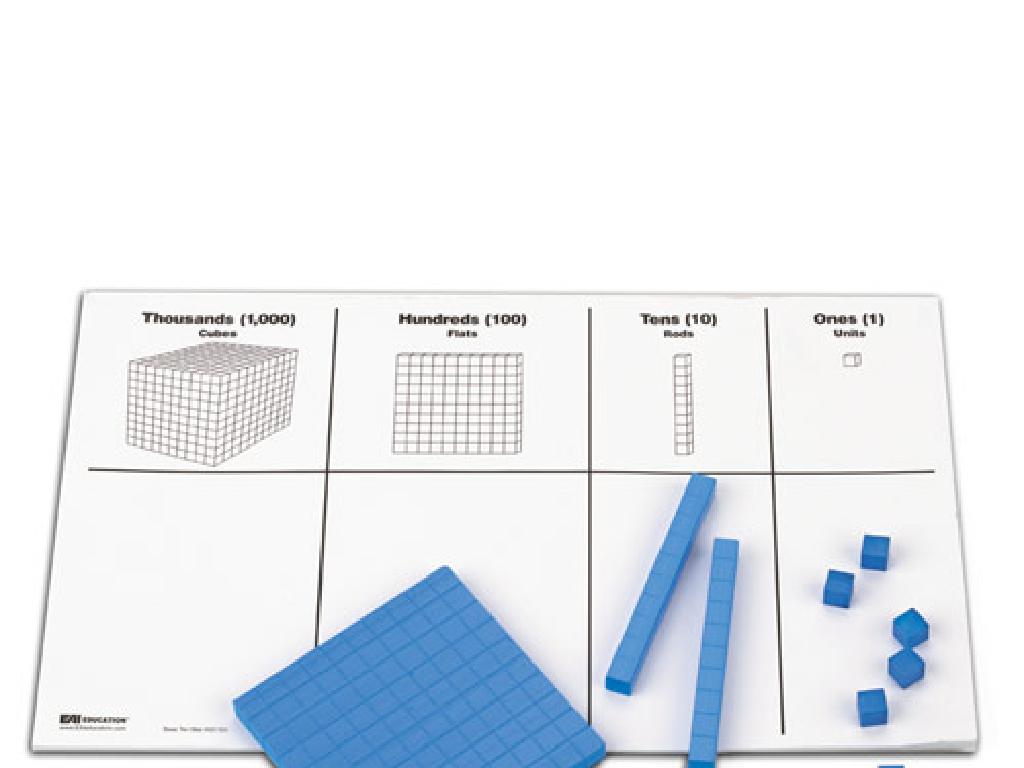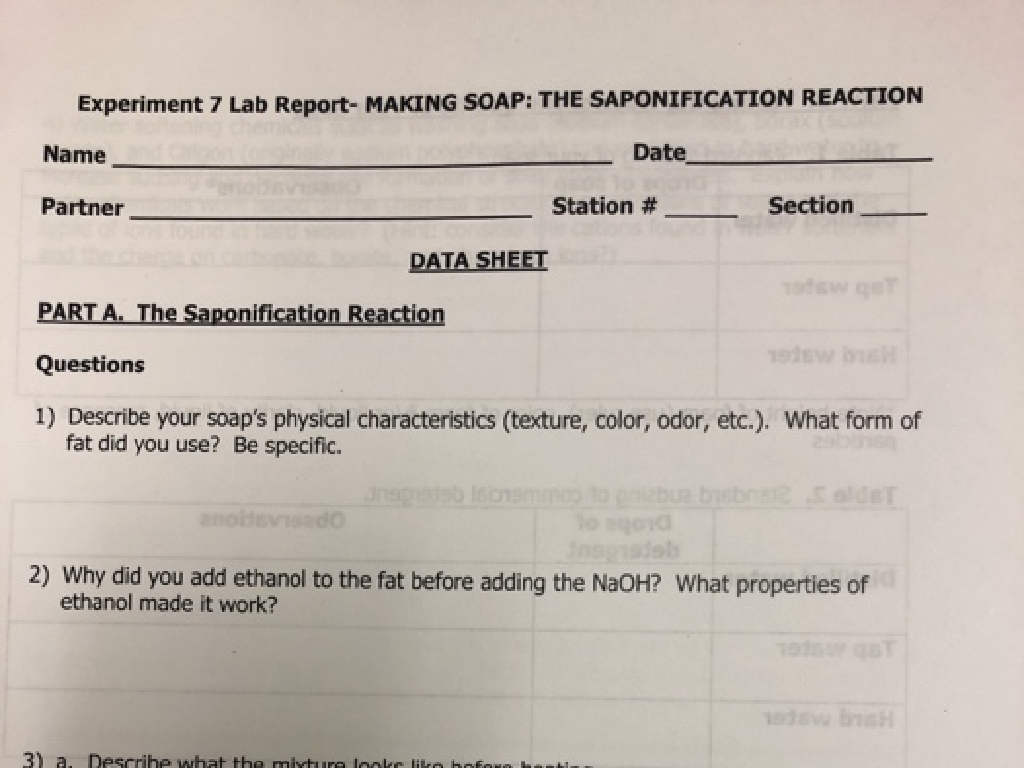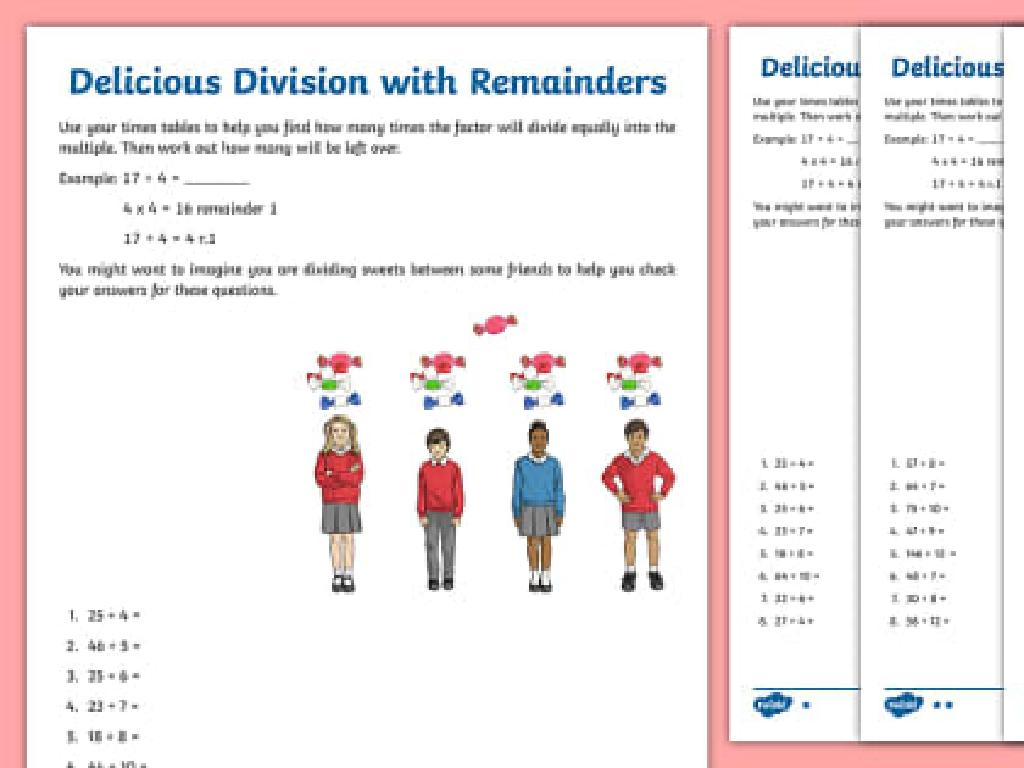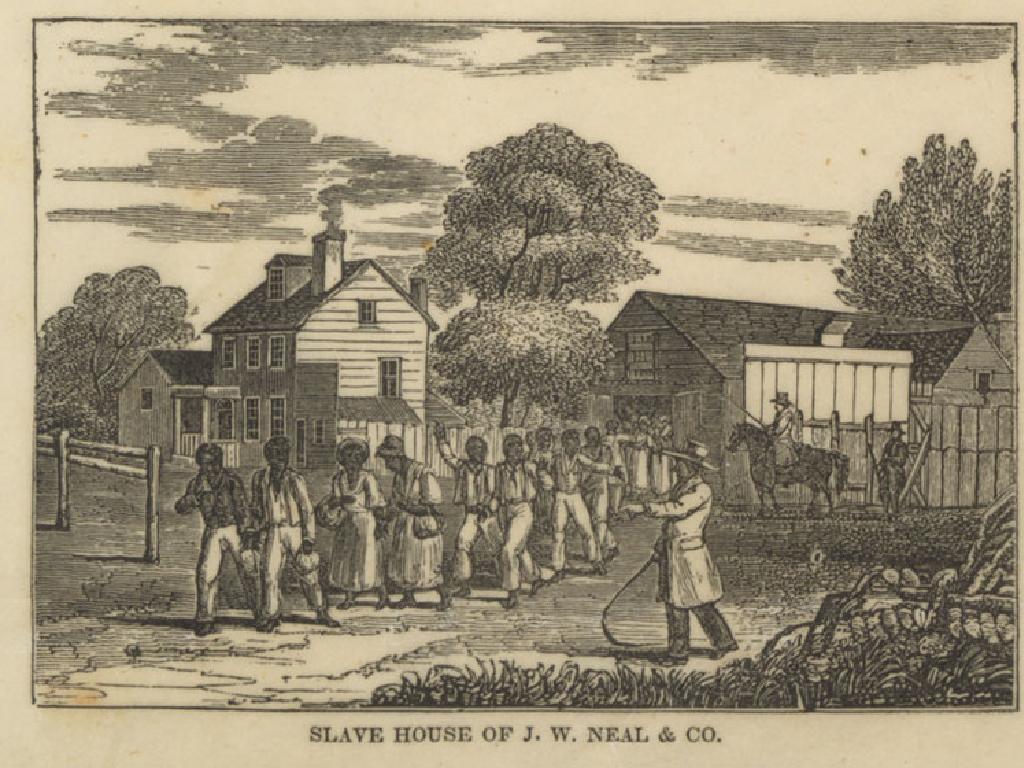Use Models To Subtract A One-Digit Number From A Two-Digit Number - With Regrouping
Subject: Math
Grade: Second grade
Topic: Subtraction Strategies: Two Digits
Please LOG IN to download the presentation. Access is available to registered users only.
View More Content
Subtraction with Regrouping
– Learn to subtract with regrouping
– Regrouping helps when you can’t subtract the top number from the bottom number.
– Break down bigger numbers
– Split the two-digit number into tens and ones to make it easier.
– Use models for understanding
– Draw blocks to represent tens and ones to see what you’re doing.
– Practice makes perfect
|
This slide introduces the concept of regrouping in subtraction, which is a key strategy for second graders to understand when dealing with two-digit numbers. Start by explaining that sometimes when subtracting, the top number in a column is smaller than the bottom number, and that’s when we need to ‘borrow’ from the next column. Show how to break down a two-digit number into tens and ones, and use visual aids like base-ten blocks or drawings to model this process. Encourage lots of practice with different examples, and ensure that students are comfortable with the concept before moving on to more complex problems.
Understanding Subtraction: Taking Away Numbers
– Subtraction means taking away
– Like 5 apples minus 2 apples leaves 3 apples
– It helps us find what’s left
– If you have 15 candies and give away 2, how many do you have now?
– Example: 15 – 2 = ?
– Start with 15, take 2 away, and count what’s left
– Practice with regrouping
|
This slide introduces the basic concept of subtraction as taking one number away from another, which helps us determine the remaining amount. Use relatable examples like apples or candies to illustrate the concept in a way that resonates with second graders. Emphasize the action of ‘taking away’ and ‘finding what’s left.’ Introduce a simple subtraction problem such as 15 – 2 and solve it together as a class. Then, explain that sometimes we need to ‘regroup’ or ‘borrow’ when we subtract, which we will practice. Prepare to demonstrate regrouping with hands-on materials like blocks or drawings in the next lesson.
Subtracting Without Regrouping
– Review simple subtraction
– Example: 52 – 3
– Subtract 3 from 52 to get 49
– Find the difference
– 49 is the answer after subtraction
– No need to regroup
– All digits are subtracted individually
|
This slide is aimed at reviewing the concept of simple subtraction without the need for regrouping. Start by reminding the students of the basic subtraction rules they have already learned. Use the example 52 – 3 to illustrate how to subtract one-digit numbers from two-digit numbers directly. Emphasize that in this case, each digit can be subtracted on its own because we are not taking away more than what is available in the ones place. Encourage the students to practice with similar examples and ensure they understand that regrouping is not required when the ones place number in the first number is larger than the one being subtracted.
When Do We Need to Regroup in Subtraction?
– Top number smaller than bottom
– Regroup by borrowing
– Take 1 from the next column to make the top number bigger
– Borrow from next place value
– Tens become ones to help us subtract
– Practice with examples
– Try 52 – 4, where we borrow from the tens place
|
This slide introduces the concept of regrouping, which is necessary when the digit in the ones place of the top number is smaller than the bottom number in subtraction. Explain that regrouping is like ‘borrowing’ 10 from the next highest place value, which in the case of two-digit numbers, is the tens place. This turns the tens into ones, making it possible to subtract the bottom number from the top number. Use examples like 52 – 4 to illustrate regrouping: we change 52 into 42 + 10, and then subtract 4 from 10. Provide several examples and encourage students to use physical objects or drawings to visualize the process. This will help them understand the concept of borrowing and why it’s necessary in certain subtraction problems.
Subtraction with Regrouping
– Regrouping: Borrow from tens
– If the ones place is too small to subtract, we take 1 from the tens place.
– Add 10 to the ones place
– After borrowing, add 10 to the ones to make it larger.
– Now subtract the one-digit number
– With enough in the ones, subtract the bottom number from it.
– Practice with examples
– Try 52 – 6 by regrouping: 42 becomes 52, then subtract 6 to get 46.
|
This slide introduces the concept of regrouping in subtraction for second graders. Start by explaining that sometimes we don’t have enough in the ones place to subtract, so we need to ‘borrow’ from the tens. Show them how to move a ten into the ones place, making it 10 more. Then, demonstrate how to subtract the one-digit number from the newly increased ones place. Provide several examples, such as 52 – 6, and walk through the regrouping process step by step. Encourage students to practice with different numbers and ensure they understand the concept of borrowing from the tens place.
Subtraction with Regrouping: Let’s Practice Together!
– Begin with 43 minus 5
– Regroup because 3 is less than 5
– Borrow 1 from the tens, so 40 becomes 30 and 3 becomes 13
– Now subtract 5 from 33
– It’s easier now: 13 minus 5 equals 8
– The result is 28!
|
This slide is designed to walk second-grade students through the process of regrouping when subtracting a one-digit number from a two-digit number. Start by showing them the number 43 and explain that we need to subtract 5. Highlight that we cannot take 5 away from 3, so we need to regroup. Teach them to ‘borrow’ 1 from the tens place, turning 40 into 30 and the 3 into 13. Now, they can easily subtract 5 from 13, leaving us with 8. Add the 30 we have left, and we get the final answer, 28. Use visual aids like blocks or drawings to help them understand the concept of regrouping. Encourage students to try similar problems and guide them through the regrouping process.
Subtraction with Regrouping Practice
– Practice problem: 54 – 6
– Practice problem: 71 – 8
– Practice problem: 65 – 7
– Remember to regroup when needed
– If the top number is smaller, regroup to subtract
|
This slide provides practice problems for students to apply their understanding of subtraction with regrouping. Encourage students to solve the problems independently, reminding them to check if they need to regroup. For example, in 54 – 6, since 4 is less than 6, they will need to regroup. Provide guidance on how to regroup: take 1 from the tens place and add 10 to the ones place. Offer several examples and use manipulatives if necessary to help students visualize the process. After students have attempted the problems, review the solutions as a class to reinforce the concept.
Class Activity: Subtraction Bingo
– Play Bingo with subtraction problems
– Solve and cover the answer on your card
– Aim for five in a row to win
– Have fun while practicing subtraction!
Subtract one-digit from two-digit numbers, remember to regroup if needed!
|
This interactive class activity is designed to help second-grade students practice the concept of regrouping when subtracting a one-digit number from a two-digit number. Prepare Bingo cards with various subtraction problems that require regrouping. As students solve the problems, they will search for the answer on their Bingo cards and cover it. The first student to get five correct answers in a row wins the game. This activity not only reinforces mathematical skills but also adds an element of excitement to learning. Possible variations of the activity could include team play, timed rounds, or using different patterns on the Bingo card instead of a row.
Subtraction Success: Keep Practicing!
– Congratulations on learning regrouping!
– Practice is key to mastering subtraction
– Try more at home to become a pro
– Use worksheets or objects like coins to practice
– Proud of your hard work today!
|
This slide is designed to celebrate the students’ accomplishment in learning to subtract with regrouping, a crucial skill in second-grade math. It’s important to encourage them to continue practicing at home to solidify their understanding. Provide them with additional worksheets or suggest using everyday items like coins or counters to create their own subtraction problems. Remind them that making mistakes is a part of learning and that with each practice session, they’ll get better and faster at subtracting. Celebrate their effort and progress in class to boost their confidence.






